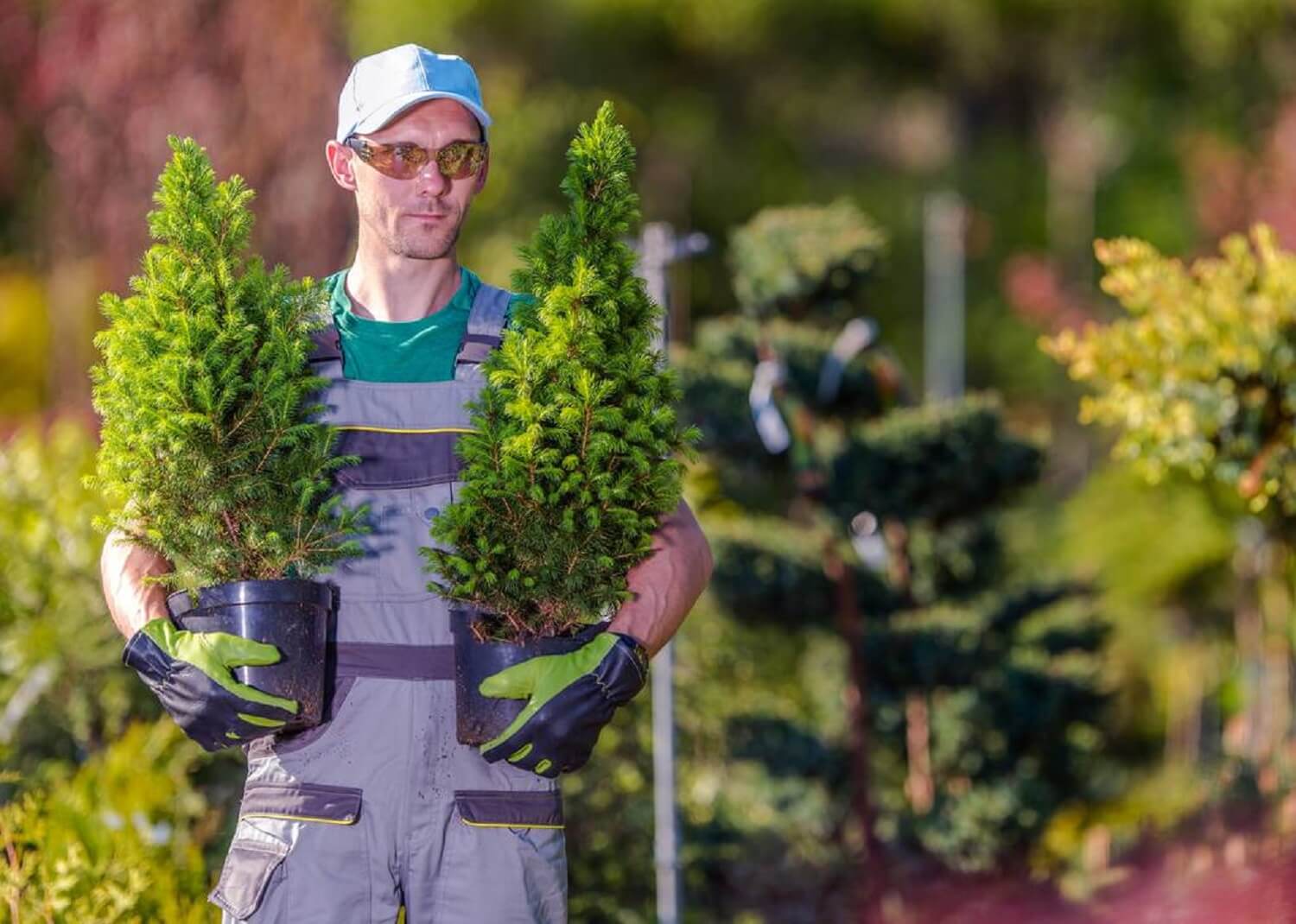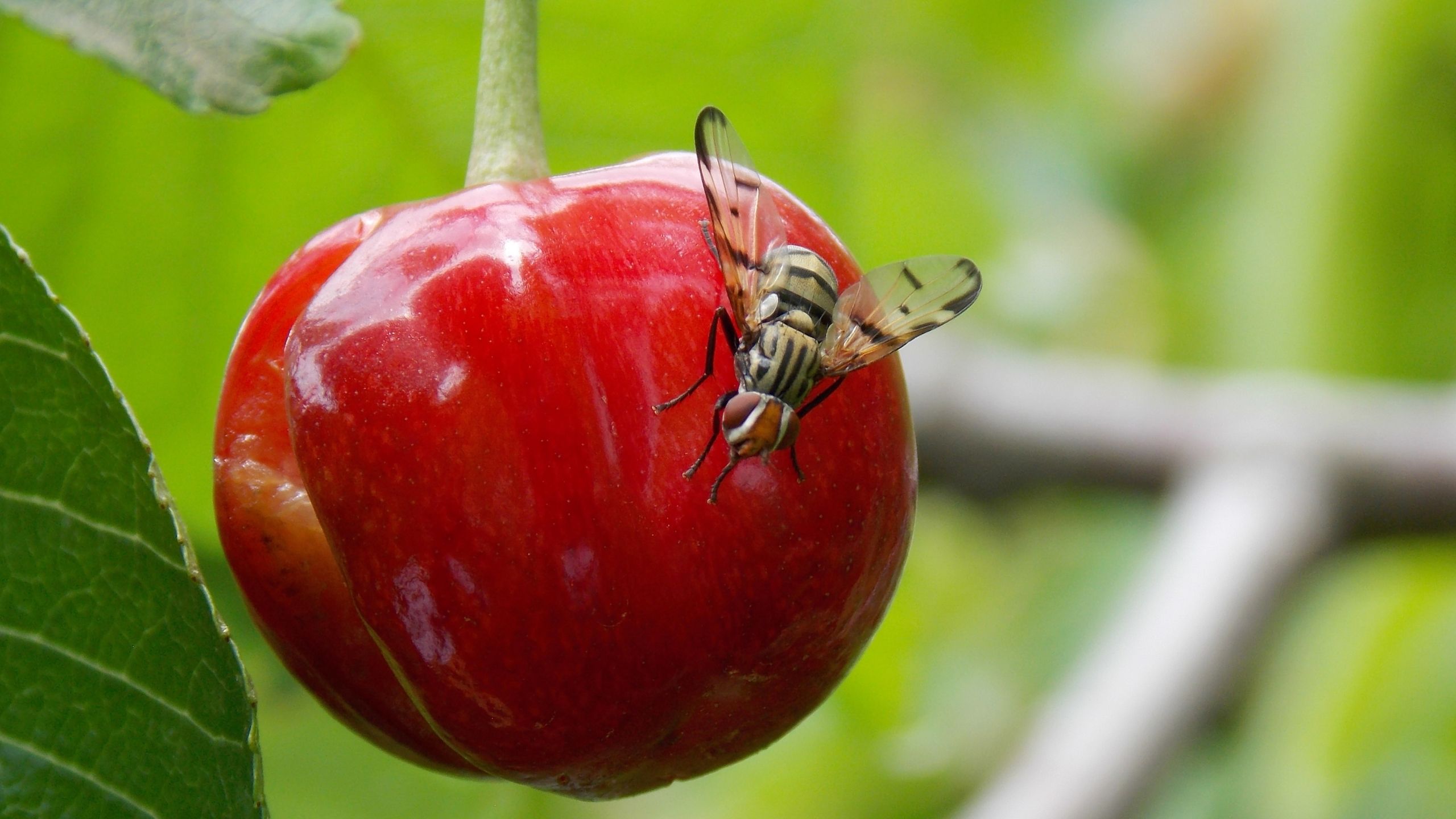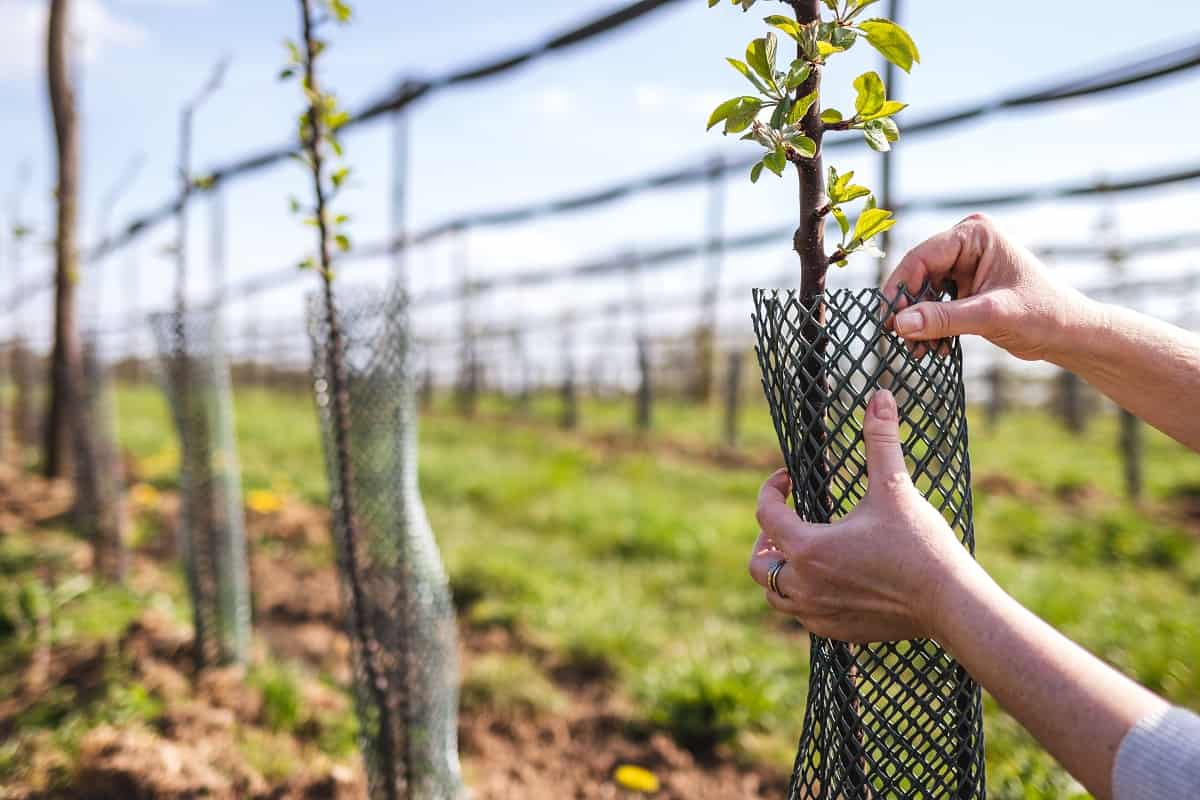Home>Gardening Tips and Tricks>Problem Solving>How To Keep Birds Out Of Trees


Problem Solving
How To Keep Birds Out Of Trees
Published: November 1, 2023
Learn effective problem-solving techniques to keep birds out of your trees. Find out how to deter birds from nesting and damaging your trees with helpful tips and strategies.
(Many of the links in this article redirect to a specific reviewed product. Your purchase of these products through affiliate links helps to generate commission for Chicagolandgardening.com, at no extra cost. Learn more)
Table of Contents
Introduction
Birds are beautiful creatures that add charm and liveliness to our surroundings. However, when they start nesting in our trees, they can become quite a nuisance. Birds nesting in trees can create messy droppings, damage the foliage, and even cause structural damage. If you’re tired of dealing with these issues, you’ve come to the right place.
This article will provide you with effective methods to keep birds out of trees, ensuring a tranquil and bird-free environment. We’ll explore natural methods, physical barriers, visual deterrents, auditory deterrents, and the use of scents and repellents. By implementing these strategies, you’ll be able to maintain the beauty of your trees without the hassle of constant bird intrusions.
Before we dive into the solutions, it’s important to understand why birds are attracted to trees in the first place. Trees provide birds with shelter, nesting sites, and a plentiful supply of insects and fruits. The branches and foliage conceal their nests, protecting them from predators. While birds are essential for the ecosystem, it’s necessary to strike a balance that allows us to coexist peacefully.
Now, let’s explore the various methods that can help you keep birds away from your beloved trees. Whether you have a single tree in your backyard or a whole garden full of them, these techniques will help you reclaim your space and maintain its beauty.
Understanding the Problem: Why Birds Nest in Trees
Before we delve into the solutions to keep birds away from trees, it’s essential to understand why birds are drawn to trees in the first place. Trees provide an ideal habitat for birds to nest and raise their young. Here are a few reasons why birds may choose to nest in trees:
- Shelter and Protection: Trees offer birds shelter from harsh weather conditions, such as rain, wind, and extreme temperatures. The canopy of leaves and branches provides a safe and secure nesting site, protecting them from predators.
- Food Source: Trees attract birds with their plentiful food sources. Many trees produce fruits, berries, or seeds that serve as a natural food supply for birds. Additionally, the insects that inhabit trees are a valuable source of food for birds and their young.
- Nesting Materials: Birds often gather nesting materials from trees, including twigs, leaves, and even bits of bark. Trees offer an abundant supply of such materials, making them a convenient choice for building nests.
- Height Advantage: Trees provide birds with a strategic advantage. The elevated position allows birds to survey their surroundings, spot potential predators, and access food sources more easily.
- Camouflage: The foliage of trees helps conceal bird nests, providing camouflage and protection. This natural cover makes it challenging for predators to locate and reach the nests.
Understanding these factors helps us comprehend why it can be challenging to deter birds from nesting in trees. Birds are instinctually drawn to these features in their search for suitable nesting sites and abundant food sources.
Next, we will explore a range of effective strategies to address this issue. By employing these methods, you can discourage birds from nesting in your trees and find a balance that allows both you and the birds to coexist harmoniously.
Natural Methods to Keep Birds Away from Trees
If you’re looking for a natural and eco-friendly approach to keep birds away from your trees, there are several effective methods you can try. These methods discourage birds by making the tree environment less appealing to them. Here are some natural techniques to consider:
- Prune and Trim: Regularly pruning and trimming your trees can discourage birds from nesting. Removing excess branches, especially those close to buildings or other areas where birds might create a problem, reduces potential nesting sites and makes it less convenient for them to build their nests.
- Change the Landscape: Creating an environment that is unattractive to birds can deter them from nesting in your trees. This can include removing or reducing sources of food like fruit-bearing trees or bird feeders. Additionally, removing or minimizing water sources such as birdbaths or ponds can discourage birds from settling in your trees.
- Scare Tactics: Birds are easily frightened by certain objects or noises. Installing scarecrows, reflective objects like old CDs or aluminum foil strips, or wind chimes near trees can startle and discourage birds from nesting. These unconventional scare tactics exploit birds’ instinctual fear of predators and unfamiliar stimuli.
- Predator Decoys: Placing realistic decoys of natural bird predators, such as owls or hawks, near your trees can create the illusion of a predator presence. Birds are naturally wary of these predators and will be less likely to risk nesting near them. Move the decoys periodically to maintain their effectiveness.
- Real Bird Sounds: Playing bird distress calls or predator sounds on a loop can make birds believe there is danger nearby. Li>
It’s important to note that these natural methods may require some experimentation to find what works best for your specific bird problem. Additionally, it’s crucial to stay consistent with the chosen methods to maintain their effectiveness.
Next, we’ll explore additional methods involving physical barriers to keep birds away from your trees.
Implementing Physical Barriers
If natural methods to keep birds away from trees aren”t proving effective, implementing physical barriers can be a more direct approach. These barriers physically prevent birds from accessing the trees, making them less likely to nest or roost. Here are some effective physical barriers you can use:
- Netting: Installing bird netting around the tree can be highly effective in preventing birds from accessing the branches. Ensure that the netting is tightly secured to prevent any gaps that birds could exploit. Netting should be installed before birds start nesting to have the best deterrent effect.
- Wire Mesh: Similar to netting, wire mesh can be wrapped around the branches to create a physical barrier. The mesh should have small enough gaps to prevent birds from squeezing through. Be cautious not to damage the tree by securely fastening the wire mesh.
- Tree Spikes: Placing tree spikes on the branches or trunk limits birds’ ability to perch or build nests. These spikes do not harm the birds but make it uncomfortable for them to land or roost. Choose tree spikes that are specifically designed for this purpose and carefully install them following the manufacturer’s instructions.
- Tree Collars: Tree collars are physical barriers that attach to the trunk of the tree, preventing birds from accessing the branches. These collars are typically made of metal or plastic and are designed to be smooth and slippery, making it difficult for birds to grip and navigate the tree.
- Tree Wraps: Wrapping the trunk or specific branches of the tree with a protective material, such as burlap or aluminum foil, can deter birds. The reflective surfaces of aluminum foil or the rough texture of burlap can discourage birds from landing or perching on the tree.
Remember to regularly inspect and maintain these physical barriers to ensure their effectiveness. Proper installation and maintenance are key to preventing birds from finding alternative ways to nest or roost in your trees.
While physical barriers can be highly effective, be sure to choose the right method for your specific situation and consider the aesthetic impact on your landscape. Next, we’ll explore additional deterrent methods using visual cues.
Using Visual Deterrents
Visual deterrents can be an effective way to deter birds from nesting or roosting in your trees. These deterrents make use of visual stimuli that are unappealing or confusing to birds, discouraging them from settling in the area. Here are some visual deterrents you can try:
- Reflective Tape or Ribbon: Hanging strips of reflective tape or ribbon from the branches creates movement and reflections, which can startle birds and keep them away. The flashing light and unpredictable patterns discourage birds from approaching the tree.
- Windsocks or Flags: Windsocks or flags flutter in the breeze, creating movement that repels birds. Birds are wary of objects that are in constant motion, as they may resemble predators. Hang these deterrents from the branches or near the tree to create an intimidating visual effect.
- Visual Predators: Placing decoys of natural bird predators, like owls or snakes, near the tree can discourage birds from nesting. The sight of a potential predator deters birds from approaching or settling in the area. Move the decoys regularly to maintain their effectiveness.
- Scare Eyes: Scare eyes are large, typically brightly colored balloons with reflective surfaces and eye-like markings. By hanging scare eyes in the tree, birds are intimidated by the illusion of predators nearby. The movement and eerie appearance of scare eyes keep birds at bay.
- Pinwheels: Installing pinwheels in the vicinity of the tree creates a visually stimulating deterrent. The spinning motion and reflective surfaces of pinwheels create a disorienting effect, deterring birds from landing or roosting.
When using visual deterrents, it’s crucial to regularly change their location or appearance to prevent birds from becoming accustomed to them. Birds can quickly adapt and realize that certain objects pose no threat, so keeping these deterrents unpredictable is key to their effectiveness.
Experiment with different visual deterrents and combinations to find what works best for your situation. It may take some trial and error to find the most effective visual deterrents for the specific types of birds in your area.
Next, we’ll explore the use of auditory deterrents to keep birds away from your trees.
Employing Auditory Deterrents
Auditory deterrents can be an effective way to keep birds away from your trees by disrupting their peaceful environment with unfamiliar and unpleasant sounds. These sounds can startle and confuse birds, making them uncomfortable and encouraging them to seek alternative nesting sites. Here are some auditory deterrents you can employ:
- Ultrasonic Devices: Ultrasonic devices emit high-frequency sounds that are inaudible to humans but are bothersome to birds. These devices can be mounted near the tree or placed strategically to cover the desired area. The ultrasonic sounds create a hostile environment for birds, causing them to seek quieter locations.
- Bird Distress Calls: Playing recordings of bird distress calls can communicate danger and signal to birds that the area is unsafe. Distress calls evoke a natural response in birds, causing them to avoid the perceived threat. By playing distress calls intermittently, birds are deterred from roosting or nesting in the area.
- Predator Sounds: Broadcasting predator sounds, such as the calls of hawks or falcons, creates an atmosphere of potential danger for birds. These sounds trigger an instinctual fear response, leading birds to avoid the area. Rotate predator sounds periodically to maintain their effectiveness.
- Motion-Activated Noisemakers: Motion-activated devices that emit startling noises when birds approach can effectively deter them. These devices utilize sensors to detect bird movement and activate a loud noise, deterring birds and disrupting their nesting or roosting behavior.
- Wind Chimes: Hanging wind chimes near trees not only create soothing sounds for humans but can also deter birds. The irregular sounds of wind chimes in the breeze can confuse and discourage birds from approaching or settling in the tree.
When using auditory deterrents, it’s important to be mindful of your neighbors and the local noise regulations. Ensure that the volume and duration of the sounds are within acceptable limits and consider using timers or motion sensors to activate the deterrents only when necessary.
Combining auditory deterrents with other methods, such as visual or physical deterrents, can enhance their overall effectiveness. Experiment with different auditory deterrents to find the most impactful sound combinations for your specific bird problem.
Next, we’ll explore the use of scents and repellents as another way to create a bird-free zone around your trees.
Creating a Bird-Free Zone with Scents and Repellents
Using scents and repellents can be an effective method to create a bird-free zone around your trees. These products make the area less appealing to birds by emitting odors or substances that deter them. Here are some scents and repellents you can use:
- Essential Oils: Certain essential oils, such as peppermint, eucalyptus, or citrus, can be effective in repelling birds. Mix a few drops of the chosen oil in water and spray it on the foliage and branches of the tree. The strong scent of these oils is unappealing to birds, deterring them from nesting or perching.
- Bird-Repellent Gels: Bird-repellent gels are sticky substances that can be applied to branches or structures near the tree. These gels create an unpleasant texture and sensation for birds when they attempt to land, discouraging them from roosting or nesting.
- Capsaicin-based Repellents: Capsaicin, the natural compound found in chili peppers, can be an effective bird deterrent. Spraying capsaicin-based repellents on the branches or foliage creates an unpleasant taste and sensation for birds, dissuading them from remaining in the area.
- Reflective Scare Tape: Reflective scare tape combines visual and auditory deterrents. Hang strips of reflective tape in the vicinity of the tree to create both movement and sound when the wind blows. The combination of reflective surfaces and the noise generated can create a disorienting effect that birds find uncomfortable.
- Repellent Sprays: Commercially available bird repellent sprays can be applied to the tree branches and foliage. These sprays contain natural ingredients that emit scents or tastes that repel birds. Follow the instructions provided on the product for safe and effective application.
When using scents and repellents, it’s essential to reapply them regularly, especially after rain or heavy winds that may wash or remove the deterrents. Additionally, be mindful of any potential harm these products may cause to beneficial insects or other wildlife in the area.
Keep in mind that individual bird species may have varying responses to different scents and repellents. It may take some experimentation to find the most effective option for deterring the specific birds in your area.
Now that you’re equipped with various methods to keep birds away from your trees, let’s explore some tips and tricks to help you maintain bird-proof trees.
Maintaining Bird-Proof Trees: Tips and Tricks
Once you’ve successfully implemented strategies to keep birds away from your trees, it’s important to maintain their bird-proof status to ensure long-term effectiveness. Here are some essential tips and tricks to help you maintain bird-free trees:
- Regular Inspections: Regularly inspect your trees for any signs of bird activity or new nesting attempts. Be proactive in identifying and addressing any potential issues before they escalate.
- Prompt Nest Removal: If you notice any bird nests in your trees, it’s crucial to remove them immediately. Ensure that you follow local regulations and guidelines regarding bird nest removal to avoid any legal consequences.
- Maintain Physical Barriers: Check and maintain any physical barriers, such as netting or wire mesh, around your trees. Repair any damaged sections and make sure they are still tightly secured.
- Vary Deterrent Methods: Birds can become habituated to certain deterrent methods over time. To prevent this, periodically switch or combine deterrent techniques, such as visual or auditory methods, to keep birds on their toes.
- Consistent Use of Scents and Repellents: If you’re using scents or repellents, make sure to regularly reapply them according to the product instructions. Factors such as weather conditions can diminish their effectiveness over time.
- Maintain a Tidy Environment: Birds are attracted to debris, food sources, and clutter around trees. Keep the area surrounding the trees clean and free of food scraps, fallen fruits, or other potential attractions for birds.
- Stay Informed: Stay updated on local bird migration patterns and nesting seasons. This knowledge will help you anticipate and prepare for potential bird activity in your area.
- Seek Professional Advice: If you’re dealing with persistent bird problems or are uncertain about the best course of action, consider consulting with a local arborist or wildlife expert. They can provide specialized guidance based on your specific situation.
By consistently implementing these maintenance tips, you can ensure long-term success in keeping birds away from your trees and maintaining a bird-free zone.
Now armed with these strategies and tips, you’re ready to reclaim your trees from nesting birds and enjoy a peaceful environment. Experiment with different methods, stay consistent, and adapt as necessary to find what works best for your specific situation.
Remember to always approach bird management with respect and consideration for the welfare of these beautiful creatures, while also protecting your property and maintaining a harmonious living space for both birds and humans.
Conclusion
Dealing with birds nesting in your trees can be frustrating, but by implementing effective strategies, you can create a bird-free environment while maintaining the beauty and health of your trees. Understanding why birds are drawn to trees and their nesting habits is crucial in finding the right solutions.
We explored various methods to keep birds away from trees, ranging from natural techniques to physical barriers, visual deterrents, auditory deterrents, and the use of scents and repellents. Each method has its own advantages and effectiveness, so it’s important to experiment and find the combination that works best for your specific bird problem.
Remember to regularly maintain and inspect your bird-proof measures, promptly addressing any signs of bird activity or nesting attempts. Consistency and adaptability are key in successfully deterring birds from your trees over the long term.
It’s also essential to approach bird management with respect for these creatures and their role in the ecosystem. Protecting birds and maintaining a harmonious coexistence between birds and humans is a balance we should strive for.
By following the tips and tricks provided, you can create a peaceful and bird-free zone around your trees, allowing you to enjoy the beauty of nature without the drawbacks of bird nesting. Seek professional advice when needed and stay informed about local bird behavior to ensure effective bird management.
Now, armed with knowledge and a range of effective strategies, you can reclaim your trees and create a tranquil outdoor space for yourself and your loved ones.







